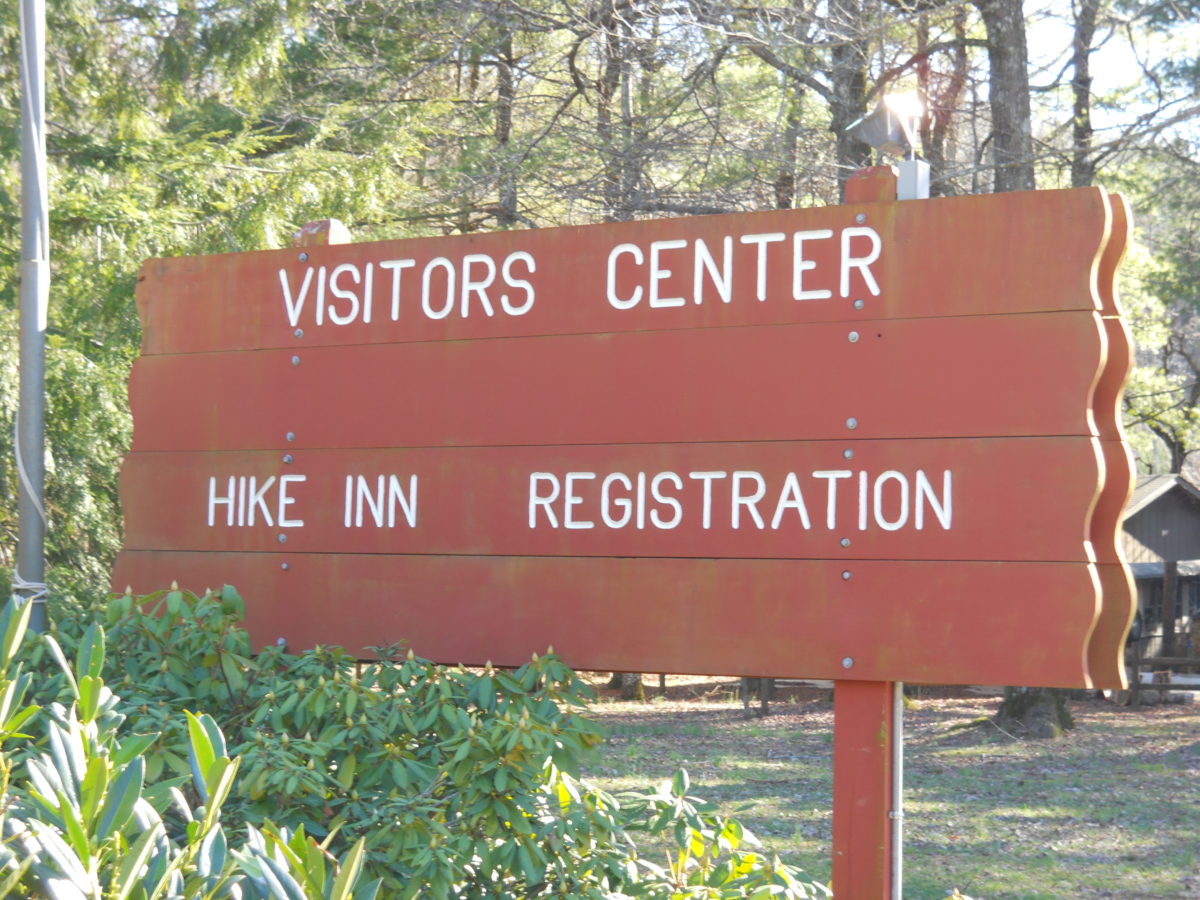
At a safe distance, bears appear to be cute and cuddly. It’s hard to resist wanting to scratch their ears while saying “Who’s a fuzzy little bear?” in a high-pitched, goofy voice.
Ravenous bears coming for your food while you’re camping overnight along the Appalachian Trail near Georgia’s Blood Mountain are also hard to resist.
America is the land of the free and the home of the brave. You have the right to bathe in pancake batter and head for the woods while making amorous bear noises.
If, however, you want to walk in the woods more than once, we suggest you follow a few tips regarding bringing food — otherwise known as “bait” — into the woods.

Is that the North Star or the camera’s flash reflected off the eye of a 65 foot tall bear? You decide.
In the dark, bears can appear to be 50 feet tall with 15? teeth and 20? claws; however, they rarely grow that large, according to most sources.
The most effective way to discover how large bears can grow is to leave food around your campsite.
U.S. Forest Service Blue Ridge District Ranger Andy Baker says, “Any bear that associates people with food is a dangerous bear because it’s going to be aggressive.” For the reading-challenged, the key words in that sentence are: people, food, aggressive and dangerous bear.
You do not have to listen to Ranger Baker. You do not have to take his advice. If you choose to ignore his suggestions, however, please let your survivors know if you want to donate any organs not ingested by the bears. Thank you.
In 2012, the USDA Forest Service mandated the use of bear-resistant canisters to store personal garbage, toiletries, odoriferous herbs and foods along the five-mile stretch of the AT from Jarrard Gap to Neels Gap. That requirement will again be enforced from March 1st through the end of May.
Bears, it is believed, frequently forget such things as dates and basic table manners. Therefore, you might want to consider applying the wisdom of using bear-resistant containers before or after that mandatory season in order to avoid duking it out with a hungry bear trying to rip off your stash. Seasoned hikers report little success in politely reminding bears that they are stealing food “out of season.”
As Ranger Baker says, “By removing the lure of foods and other odors, we stop giving bears a reason to approach a campsite.”
Forest officials say black bear encounters have increased significantly in recent years in the Blood Mountain Wilderness. Bears become more active as the seasons and weather change. They are particularly attracted to human food brought into wilderness in the early spring when natural food sources are not yet plentiful. This is also the peak season for northbound Appalachian Trail hikers to begin their journeys.
Bear-resistant canisters trap odors inside, eliminating the lure of food, and they are designed to be tamper-resistant against extreme force. The regulation requires that the canisters used must be solid and non-pliable. These canisters can be purchased or rented at most retail stores and online sellers that stock camping gear.
The storage regulation is mandatory for all dispersed camping in the Blood Mountain Wilderness within a quarter mile of the trail from Jarrard Gap to Neels Gap, which includes the Blood Mountain Shelter and Woods Hole Shelter. Hikers who choose not to camp along this section of trail are not required to carry a canister. Traditional food storage methods in the wilderness, such as hanging food bags between trees, are not allowed as a substitute for using a bear-resistant canister under this regulation, but are still encouraged at other times and in other areas of the forest. However, these methods are not as effective as bear-resistant canisters at preventing bears from retrieving food.
“We have worked closely with the Forest Service to find the best solution, and we support them in taking this measure to protect hikers,” said Shelley Rose, president of the Georgia Appalachian Trail Club. “So far, we are seeing fewer bear-hiker interactions, and that’s a good thing for both the hikers and the bears.”
The regulation was first issued in 2012 by the Forest Service as an alternative to closing the area along the Appalachian Trail in the Blood Mountain Wilderness to camping. In previous years, concerns about hiker safety after repeated bear conflicts required temporary, seasonal camping closures for the area. Now, hikers have the option of camping in the area year-round as long as they carry and use a bear-resistant canister in the springtime. The requirement was developed in consultation with the Georgia Appalachian Trail Club, the Appalachian Trail Conservancy and the Georgia Department of Natural Resources, Wildlife Resources Division.
For more tips on how to protect yourself and black bears when visiting the National Forest, visit the Chattahoochee-Oconee National Forests website at www.fs.usda.gov/conf or contact the Blue Ridge Ranger District Office at (706) 745-6928. A map of the area covered by the regulation is available online, at nearby trailheads and at the District Office.



